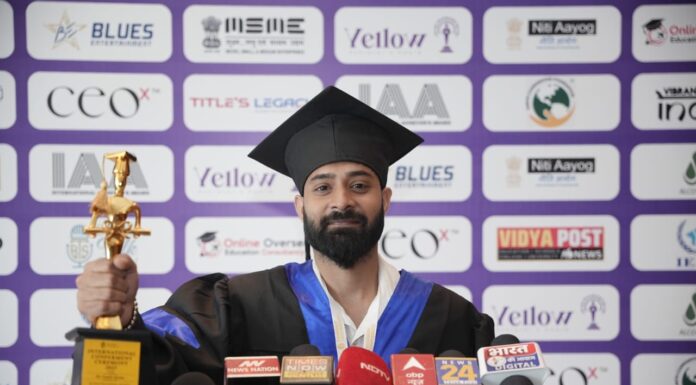“The most coveted product in today’s creative world.” Those words encapsulate the driving ethos of OTT BRAINS, a magazine ready to bridge art, intellect, and emotion. It claims the 360° territory of the moving image, preparing for its 2026 launch with a symphony of anticipation. Its pens are sharpening to redefine how cinema is read, felt, and remembered.
At the heart of its first volume lies an evocative tribute to Rabindranath Tagore. The magazine dares to explore the uncharted dimension of his visual art, the green skies, surreal creatures, and the symbolic quietude of his brush. Ujjal Chakraborty, the National Award-winning author and film curator, delivers a masterful piece that deciphers Tagore’s silence through visual unpredictability and technical elegance.
Tagore’s aura, impossible to capture, still permeates every word of OTT BRAINS. Its preamble perceives him as a divine whisper in creative consciousness. Chakraborty’s essay unfolds his genius not just as a painter but as an eternal thinker whose canvas breathes cinematic rhythm.
The editorial stance of OTT BRAINS is both disciplined and daring to produce OTT film reviews within two days of release. It believes in immediacy as integrity. Through honest critique and timely observation, it intends to shape the evolving grammar of Indian streaming culture, echoing the voice of its viewers rather than the market.
In another powerful segment, filmmaker Sudeshna Goswami’s “Why Bengalis Endure” transforms history into emotional architecture. Her essay reflects on colonial trauma, human survival, and cultural resilience. Mrinal Sen’s Interview movie becomes her cinematic mirror, an emblem of realism and suffering turned into art.
The magazine’s soul also rests on curation. Rajasri Chakraborty, content analyst, adds brilliance through selective chronology and thematic depth. Her understanding of narrative structure refines OTT BRAINS into an infotainment masterpiece.
Design, the unspoken voice of any publication, is sculpted here by Aparajito Chakraborty. Each frame, each page layout, each silent corner tells a story. The visual experience feels cinematic, each image a still shot of emotional resonance.
The closing reflection by Ujjal Chakraborty pays homage to cinema’s timeless constellation—Satyajit Ray, Mrinal Sen, Ritwik Ghatak, Tarun Majumdar, and Tapan Sinha—connecting them with Godard’s rebellion, Kurosawa’s vision, Pasolini’s poetry, and Bazin’s thought. OTT BRAINS thus becomes a continuum of courage, imagination, and intellect, an ode to the art of storytelling that truly goes beyond the horizon.





















